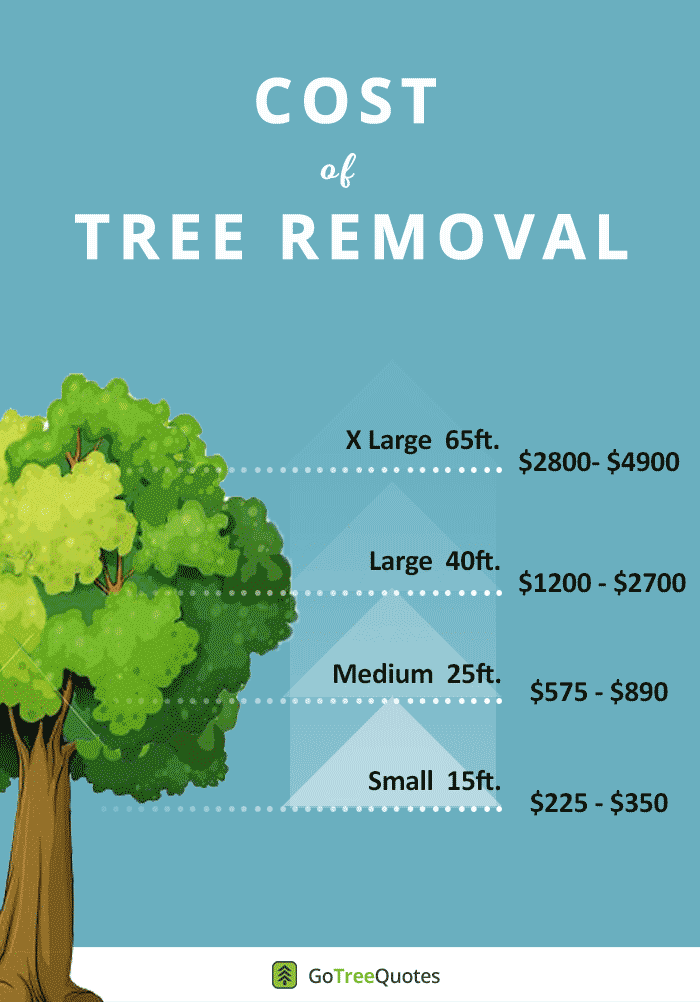Featured
Table of Contents
- – Kulpsville, PA Stump Removal Cost Guide 2025
- – Kulpsville, PA Stump Grinding Reviews: Real Ex...
- – Accessible Arborist Costs In Kulpsville, PA
- – Current Tree Clearing Pricing In Kulpsville, PA
- – Get Tree Trimming Costs In Kulpsville, PA
- – Free Arborist Estimates In Kulpsville, PA
- – Kulpsville, PA Tree Service Evaluation: Pricing
- – Kulpsville, PA Tree Trimming Price Factors
- – Free Tree Service Estimates In Kulpsville, PA
- – Kulpsville, PA Tree Clearing Service Cost Gu...
- – Kulpsville, PA Tree Trimming Red Flags: Pric...
- – Senior Discounts On Tree Trimming In Kulpsvi...
- – Extended Tree Service Service Plans In Kulps...
- – Kulpsville, PA Tree Cutting Pricing: What To...
- – Kulpsville, PA Stump Grinding: Package Deals

The subsections listed below supply more comprehensive info about rates, including a typical range for each. TypeAverage Elimination CostPineConiferPalmMagnoliaArborvitaeAshCedarSweet GumEucalyptusSycamoreCypressOakMaplePoplar You can expect to pay between to remove a pine, depending on its size. Removing a pine is one of the more budget friendly jobs unless it is one that has been around for several years and is quite large.
Kulpsville, PA Stump Removal Cost Guide 2025
Pines likewise have a tap root that grows deep into the soil, which can prove to be harder to remove. The process itself includes an expert cutting the tree, clearing the base, cutting the surface roots, eliminating the stump, and lastly treating the soil. Without an expert hand, you risk leaving pine seedlings behind, which will fall from the roots of distressed pines.
Kulpsville, PA Stump Grinding Reviews: Real Experiences
The U.S. nationwide average for conifer elimination is roughly to have the conifer cut down, carried away, and the stump ground or eliminated entirely. Conifers are generally easier to remove, and although they can grow rather high, they do not cost a fortune to eliminate. Conifers include pine, spruce, fir, and juniper trees.
Accessible Arborist Costs In Kulpsville, PA
While conifers are gorgeous, they eliminate native plants and certain kinds of yard. This is because they need a lot of water and nutrients to make it through, so they seep it off surrounding plants. They likewise have an extensive network of roots, which can affect your home's structure. The average cost of palm elimination depends on the height as much as the type, varying from.
Current Tree Clearing Pricing In Kulpsville, PA
That is why it is very important to know which type you are removing. While you do not need an herbicide to eliminate a palm tree, there are some steps your removal professional will need to require to make sure the job is done properly. There are 2 methods they can eliminate them: by slicing them down or digging them up.
Get Tree Trimming Costs In Kulpsville, PA
From there, they eliminate the real tree and then the stump. Expect to pay in between to remove this type of tree, depending on the exact size and details of the job.
Free Arborist Estimates In Kulpsville, PA
There are 3 types: green, white, and black ash. White ash is known for its numerous colors. With its gray-tinged bark, its leaves are green or purple in the spring and golden yellow or purplish-red in the fall. They delight in moderate environments and lots of sun. The green ash is named such due to its green or yellow foliage.
Kulpsville, PA Tree Service Evaluation: Pricing

Due to the variation in height, the removal cost variation is large from. A coniferous, evergreen tree, the cedar is a sturdy types.
Kulpsville, PA Tree Trimming Price Factors
The growth of incorrect cedars varies from 50 feet up to 230 feet high. With star-shaped leaves and stunning fall colors, the sweet gum is considered a medium to big tree.
Free Tree Service Estimates In Kulpsville, PA
It has a big root base of 40 to 50 feet, which affects the removal expense. Generally, it costs between to remove a eucalyptus. Eucalyptus are not typical everywhere, however they are quite big compared to others, which is why even the smaller sized ones are so expensive to get rid of. Originally from Australia, eucalyptus are invasive plants that grow in thick groves that secure native plants.
Kulpsville, PA Tree Clearing Service Cost Guide
There are a handful of ways to do this, consisting of burning, pulling, grinding, or eliminating them with herbicide. Expect to pay between to get rid of sycamores, based upon the height, trunk size, and quantity of work involved. Sycamores are among the biggest wood trees, typically varying from 60 to 100 feet high and as broad as 15 feet.
Kulpsville, PA Tree Trimming Red Flags: Pricing Edition
The first 2 steps will expose the withins of the tree and cut off the circulation of nutrients up the trunk. From there, a professional applies herbicide to kill the tree and cuts down the trunk.
Senior Discounts On Tree Trimming In Kulpsville, PA
There are several types of Cypress trees, but the most prevalent are the Leyland, Arizona, Bald, and Italian. The Bald Cypress grows in swampy or very moist locations while the others delight in a dry, warm, or hot environment (stump grinding). They can grow as high as 80 to 100 feet tall
Extended Tree Service Service Plans In Kulpsville, PA

Prone to illness, the Cypress is one of the most valued woods for furnishings. The average oak grows to around 60 feet, and depending on the intricacy of the removal, it costs an average of to get rid of. The specific size of your oak and the effort required to fell it affect what you will really pay for elimination in addition to any additional services like stump grinding.
Kulpsville, PA Tree Cutting Pricing: What To Expect
Access to the trees and the roots will likewise impact the total expense. Maples are generally among the more pricey trees to get rid of since of their size and the work included in the elimination.
Kulpsville, PA Stump Grinding: Package Deals
Poplars are giants of the types. Growing as high as 90 to 115 feet, these huge lumbers are generally found in The United States and Canada and consist of the aspen, cottonwood, and balsam trees. Boasting an expansive root system, poplars can be expensive to eliminate when completely grown. The process to get rid of trees involves all the cutting and cutting of the branches and trunk, bringing it down to a stump.
Table of Contents
- – Kulpsville, PA Stump Removal Cost Guide 2025
- – Kulpsville, PA Stump Grinding Reviews: Real Ex...
- – Accessible Arborist Costs In Kulpsville, PA
- – Current Tree Clearing Pricing In Kulpsville, PA
- – Get Tree Trimming Costs In Kulpsville, PA
- – Free Arborist Estimates In Kulpsville, PA
- – Kulpsville, PA Tree Service Evaluation: Pricing
- – Kulpsville, PA Tree Trimming Price Factors
- – Free Tree Service Estimates In Kulpsville, PA
- – Kulpsville, PA Tree Clearing Service Cost Gu...
- – Kulpsville, PA Tree Trimming Red Flags: Pric...
- – Senior Discounts On Tree Trimming In Kulpsvi...
- – Extended Tree Service Service Plans In Kulps...
- – Kulpsville, PA Tree Cutting Pricing: What To...
- – Kulpsville, PA Stump Grinding: Package Deals
Latest Posts
Viola, NY Stump Removal: What Customers Say
Upfront Tree Cutting Costs In New Providence, NJ: No Hidden Fees
Bostonia, CA Tree Trimming Warning Signs: Pricing Edition
More
Latest Posts
Viola, NY Stump Removal: What Customers Say
Upfront Tree Cutting Costs In New Providence, NJ: No Hidden Fees
Bostonia, CA Tree Trimming Warning Signs: Pricing Edition